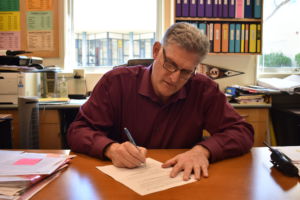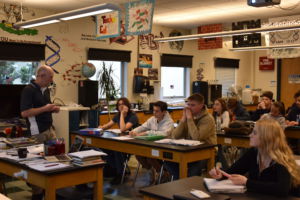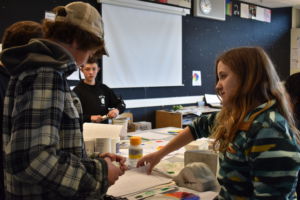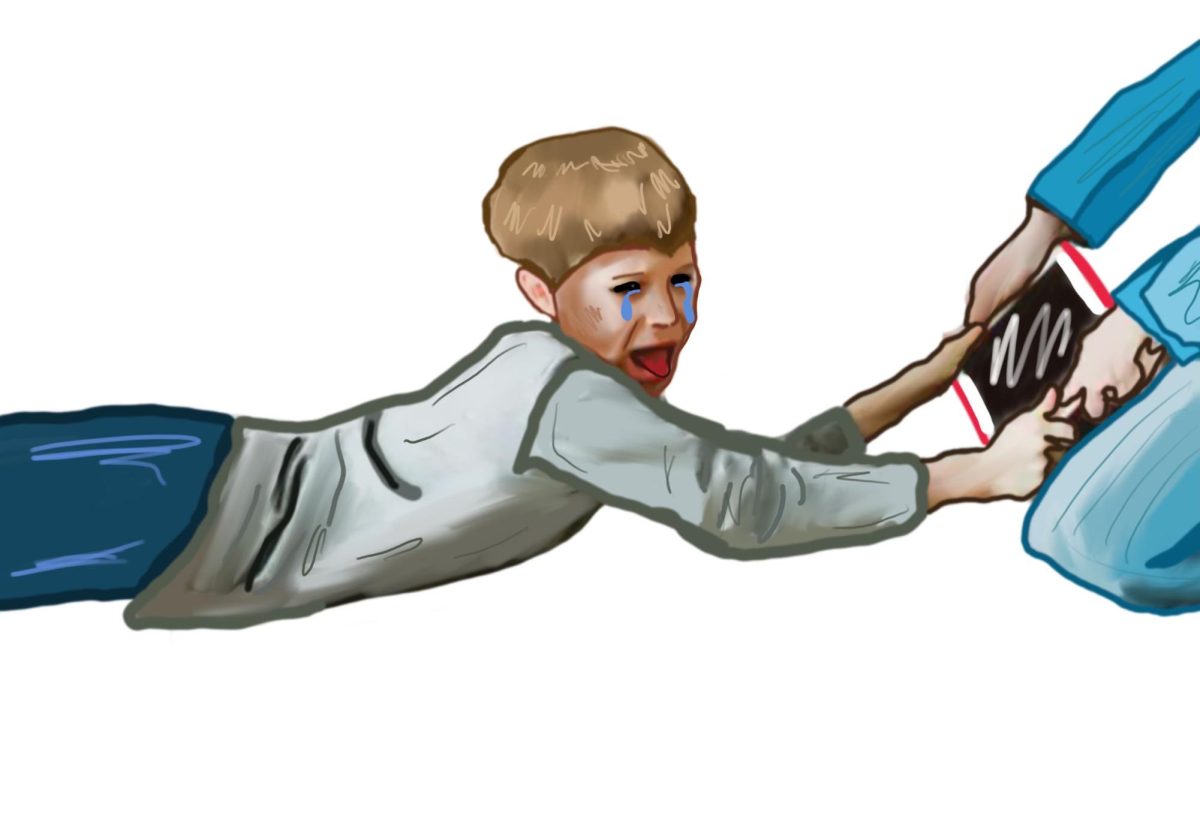With the 2018-2019 course selection process coming to a close last month, preparation is underway for new classes in the upcoming year. Students are able to access a wide variety of options, with over 150 classes encompassing the full spectrum of the arts to the sciences. Although the list allows students to diversify their schedules with a multitude of subjects, prerequisites have become a significant aspect of the process.
According to a Bark survey, 27 percent of students self-reported that they wanted to take a class at Redwood, but couldn’t because they did not meet the prerequisites.
Prerequisites offer a wide range of advantages and benefits for students. By providing fundamental skills, they help ensure that students will be able to succeed in subsequent classes.
Art Explorations and Graphic Design teacher Nicole Mortham said that general prerequisites are worthwhile, as long as students stay challenged.
“I think the benefit of a prerequisite is that students are coming in with general skills and knowledge to help prepare them for whatever the course is that they are taking next. It gives everybody an even playing field going into the next course,” Mortham said.
Integrated Science 1-2 and Honors Biomedical Science teacher Skip Lovelady said he supports any prerequisite in which a student needs to learn the skills taught in the required class in order to succeed in the next course. He divides prerequisites into two unique categories, where the first is defined as essential courses while the second is referred to as weeders.
“One [category] is very tangible and makes every sense in the world, and that is if a course requires a lot of prerequisite knowledge that can only be gotten by going through a previous course, then that previous course should most certainly be a prerequisite,” Lovelady said. “There’s another set that have a couple of different terms that are used—a lot of them are called weeders. These are essentially exercises in forcing a person to go through a very tough experience in order to make it to your level.”
Regardless of the type, Lovelady said that every prerequisite needs to be reviewed regularly and updated as needed to make sure they are still relevant.
“Prerequisites shouldn’t just be accepted for year after year and the person required to defend the prerequisite is the one that is requesting the prerequisite. When the trigonometry teacher requests two years of algebra plus geometry to get to precalculus, they should be asked occasionally, ‘Has anything changed?’” Lovelady said.

Principal David Sondheim holds a similar view about the necessity for a regular schedule of review and revision. According to Sondheim, by utilizing course prerequisites appropriately, he is confident that students will be encouraged and supported to be successful in upper division classes.
Senior Sarah Noble recognizes the benefits and importance of prerequisites such as Integrated Science, however she thinks they are a hindrance for those who want to pursue higher level science courses.
“I think that for students who don’t want to take [course prerequisites], it makes it sort of a joke class to them. But I think it is important for students who are just showing up to school and they just want to come to school to learn, but not do much past that. For students who are interested in something other than science or art, or who want to get more advanced in science, then prerequisites are hindering,” Noble said.
Based on her own experience within the science department, Noble said that there should be an alternative method to completing the basic requirements.
“I didn’t mind taking Integrated Science in terms of how it was taught and what I learned, but I feel it holds you back in terms of advanced science classes. I think there should be an accelerated one-year program for students who want to take more science electives,” Noble said.
Although it is not what Noble recommends, the Integrated Science classes are changing to meet the New Generation Science Standards. Starting in Fall 2018, Integrated Science 1-2 will be replaced with Physics in the Universe, with additional changes to the curriculum occurring over the next few years.
The modifications will provide students with a more specific baseline skill set to advance to higher level science classes than is possible with the current, broad Integrated Science sequence. Since he started at Redwood in 1995, Lovelady said the science curriculum has grown over the years.
“When I first got here, Integrated Science was very new. We had seven electives in science. So, in theory, Integrated Science was preparing students for seven different courses, which is already a pretty good number,” Lovelady said. “Fast forward to today, 23 years later, we still have Integrated Science, which still remains the common prerequisite for all of our electives, but now we have 13 electives.”

Based on this growth, Lovelady said it’s very difficult for a two-year sequence to provide content instruction for all 13 electives. However, he considers the classes essential for providing a functional foundation.
“I’d have to say as far as content is concerned, you couldn’t possibly [provide this for all 13 electives]. What we can do, though, is participate in a lot of skill building, study skill building, group work building and the things that are going to help you when you get to Honors Physics. A common way of acting in a lab, a common way of participating, a common way of working with peers, a common way of dealing with data,” Lovelady said.
While there are many benefits to prerequisites, 78 percent of students self-reported that they should be able to test into classes when they don’t meet the prerequisites, according to a recent Bark survey. With access through testing, students would be able to bypass lower level classes and proceed directly towards courses that better match their skill sets. A student, for example, would not need to take Advanced Algebra first to be able to enroll in Chemistry if they could pass a test demonstrating their algebra skills.
Sophomore Francesca Fox agrees with this method to a certain extent. Within her own experience in ceramics, she has found that one needs to acquire the fundamental skills taught in Ceramics 1-3 to be able to proceed into the higher level classes. However, with other art electives, Fox said that access to honors and AP classes should be offered to those who can demonstrate they have mastered the basic skills through testing.
In contrast, Sondheim is concerned with this approach and questions whether it reflects a student’s ability to do well in the class.
“I don’t know that a test is the answer. A single test usually isn’t fully representative of a student’s abilities or limitations, I should say preparation or lack of preparation, to be successful,” Sondheim said.
Looking more in-depth at the other end of the spectrum, Art Explorations is a prerequisite for five of the Visual Arts classes. Mortham said that Art Ex applies to the various electives a student can take and there are multiple transferable skills that come up within the class’ curriculum.
“One of the things I was teaching in Art Ex today was how to compose an image. We talked about the rule in thirds and how to place objects in the frame. That’s something that directly applies to photography later. So they’ll get to learn how to do it through drawing and manipulating objects and later when they are taking pictures in photography, they’ll already have a sense of how to compose an image,” Mortham said.

This transfer of skills will be even more evident next year, when Art Explorations will be scheduled as a year long course that is combined with a secondary Visual Arts class. Students will have the same art teacher through the year-long sequence (except for Architectural Design), where they will experience both the prerequisite and the elective of their choice.
Mortham is excited about the new requirement, as she will be able to spend more time during the Art Ex segment providing students with the specific skills that will build a solid foundation for the next class.
“I’m going to be able to modify each Art Ex class based on what the kids are taking next. So if I have an Art Ex class that will be going to Architectural Design, I’m going to spend a lot more time teaching those kids perspective and things in drawing that are going to help make that class stronger and easier for them,” Mortham said.
Above all, Sondheim said that he wants to create an environment where students are encouraged to reach their full potential, in whatever subject it may be in.
“I want a system that ideally doesn’t stop anybody who could be successful in the course and provides awareness for the student that the course is appropriate for them,” Sondheim said.























